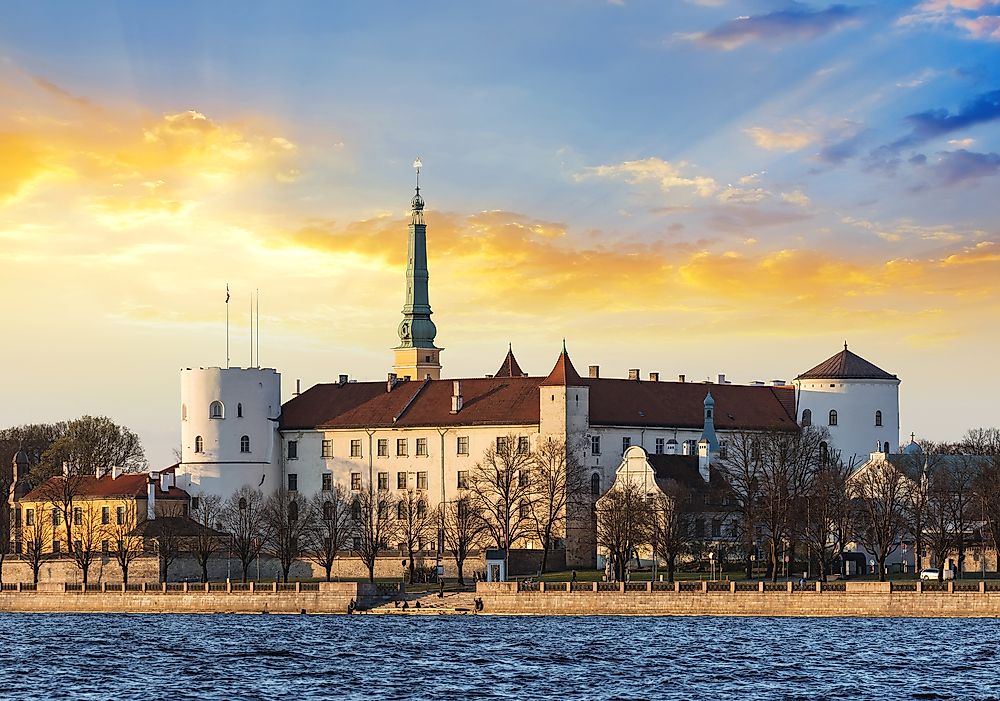Where Does The President Of Latvia Live?

Latvia is a country in Northern Europe that encompasses an area of 64,589 km2 and has an estimated population of 1,919,968. The country is considered a Baltic state and is bordered by Estonia (north), Lithuania (south), Russia (east), and Belarus (southeast). Latvia first declared independence in 1918, but was occupied by both the Soviet Union and Nazi Germany during the Second World War, and was later part of the Soviet Union until its dissolution in 1991.
Official Residence
The official residence of the President of Latvia is Riga Castle, which is located in the country's capital city, Riga, on the banks of the River Daugava. The castle was first built in 1330, but was later destroyed and then rebuilt between 1497 and 1515. Between 1330 and 1562, Riga Castle was occupied by the Master of the Livonian Order. However, when the Livonian feudal states were dissolved, the castle was occupied by Poland, Lithuania, Sweden, and finally Russia. Riga Castle became the residence of the President of Latvia in 1922, and then during the period of Soviet occupation, the building was used by the Council of People Commissars of Latvian SSR, followed by the Vladimir Lenin All-Union Pioneer Organization, which was a youth organization, and was popularly known as the Pioneer Castle.
Structure of the Castle
The original building had three floors that enclosed a rectangular courtyard and had four rectangular towers at the corners. The castle was destroyed by the Rigans 1484, and then reconstructed with two towers which were rounded instead of rectangular, due to new developments in military technology. The two towers, the Tower of the Holy Ghost and the Lead tower, are currently used to hold the flag of Latvia and the Standard of the President. During much of the 17th century, the castle was developed and expanded, and was under construction for most of this period. Additionally, an arsenal was attached to the castle in 1682. The castle was built in the form of Late Classicism architecture, and the ground floor was generally used for household needs and castle guards. There were apartments on the first floor, while the second floor featured an arms house, which had narrow windows that served as cannon holes. The basement of the castle included several spacious underground passageways.
Riga Museum
Since 1920, Riga Castle has contained several museums, including the State Historical Museum, which is now known as the National History Museum of Latvia, as well as the State Museum of Art. During the period of Soviet rule, the castle housed the Rainis Literature and Art History Museum, Foreign Art Museum, and the History Museum of the Latvian Soviet Socialist Republic. After the fire of 2013, the National History Museum of Latvia was temporarily relocated. However, after repairs, the President of Latvia and its various museums resumed residence at Riga Castle.
Fire at Riga Castle
In 2013, fire engulfed the Riga Castle, destroying a significant part of the building. According to news reports, approximately 34,444 sq ft of the castle was destroyed. The fire occurred when the building was undergoing renovations, and therefore there were no casualties, and only firefighter was hospitalized due to smoke inhalation. The President of Latvia described the incident as a national disaster.







